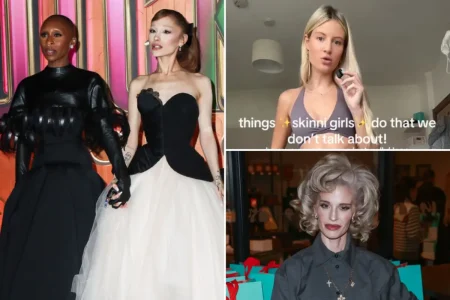Gen Z Surprising More Traditional in Relationships Than Older Generations
In a revelation that challenges common stereotypes about today’s youth, recent data suggests that Generation Z might be taking a more conventional approach to relationships than their older counterparts. According to research from Sister Wives, a platform dedicated to polyamorous and polygamous connections, millennials and Gen X are nearly seven times more likely to pursue non-monogamous relationships than their younger Gen Z peers. This finding stands in stark contrast to the popular narrative of Gen Z as boundary-pushers and experimental pioneers in all aspects of life, including intimacy and relationships.
The data tells a compelling story about who’s actually leading the charge toward relationship diversity. Among over 18,000 users on the Sister Wives platform, millennials aged 35-44 represent the dominant user group at 38.2%, with Gen X following at 20.8%. Meanwhile, Gen Z accounts for just 5.5% of users – surpassing only seniors in their representation. “It’s not Gen Z leading the movement toward non-traditional relationships — it’s millennials,” the site’s report declared, noting that “midlife experimentation is driving users to seek new relationships.” This pattern suggests that life experience and emotional maturity might play significant roles in one’s readiness to navigate the complexities of multiple partnerships.
Christopher Alesich, CEO of Sister Wives, offers insight into why younger daters might be less represented in polyamorous communities. He suggests that many Gen Z individuals are still working through their first serious monogamous relationships and haven’t yet developed the emotional toolkit necessary for managing multiple partners. Ethical non-monogamy demands strong communication skills, clear boundary-setting abilities, and excellent time management – competencies that typically develop with age and relationship experience. The data indicates this isn’t about conservative values but rather about life stage and emotional preparedness. While Gen Z might be progressive in many social and political matters, they appear to be taking a more gradual approach to relationship structures.
Experts in the field provide further context for understanding this generational divide. Dr. Terri Conley from the University of Michigan suggests we’re witnessing a “maturation effect” rather than a fundamental difference in generational values. She points out that younger people with relatively brief relationship histories may not yet feel equipped to manage multiple romantic connections simultaneously. Dr. Justin Lehmiller from the Kinsey Institute confirms this perspective through his own research: “Compared to millennials, Gen Z was both less experienced with and less open to the idea of being in some type of sexually open relationship.” His conclusion challenges the stereotype of young adults as universally sexually liberal, noting that the common perception of Gen Z as “the generation of polyamory” isn’t aligned with the actual data.
Gender differences across generations reveal another intriguing dimension of this phenomenon. While Gen Z men slightly outnumber women on the platform (27.37% versus 26.47%), this represents the most balanced gender ratio of any age group. Among Baby Boomers, the disparity grows dramatically, with men accounting for 56% of users while women represent just under 10%. This suggests that younger women may be more open to exploring relationship alternatives than their older counterparts, potentially reflecting evolving gender norms and expectations. The relatively equal interest among Gen Z men and women could indicate a more egalitarian approach to relationship exploration when they do venture beyond monogamy.
The limited presence of Gen Z on specialized polyamory platforms might also reflect different dating strategies rather than disinterest in relationship diversity. As Dr. Michelle Drouin from Indiana University-Purdue University Fort Wayne observes, younger people have numerous ways to connect with potential partners who share their relationship values. “They can use Hinge or Tinder to find polyamorous partners or meet them the old-fashioned way at parties or through friends,” she explains. This generation has grown up with unprecedented digital connectivity and may be more comfortable navigating mainstream dating apps to find partners who align with their relationship preferences, whatever those may be. Rather than committing to specialized platforms, they’re adapting existing tools to meet their needs, demonstrating their characteristic flexibility and resourcefulness.














